Red wine oenophiles: Ever raise a glass in a celebratory toast and wish the clear and effervescent, straw or gold colored wine in your flute glass was red? I mean sparkling wine can be made with red grapes, and sparkling rose’ does have that lovely salmon pink or rich strawberry hue, but have you ever wanted something bubbly and still enjoy that concentrated grape skin essence, and berry and dark stone fruit flavor you favor in red wine? Well look no further than Lambrusco.
Sparkling Lambrusco is principally made from the red grapes Lambrusco Grasparossa, Lambrusco Salamino, Lambrusco Montericco, Lambrusco Maestri, Lambrusco Sorbara and Lambrusco Marani. Lambrusco D.O.C. can be comprised of a maximum of 15% other grapes such as Ancellotta, Malbo Gentile, and Cabernet Sauvignon, for added color, structure, and acidity. The pressed grape juice (the must), is left in contact with the grape skins for a short interval (a process known as maceration), before undergoing fermentation using the traditional method (defined by a secondary fermentation taking place in the bottle), or the charmat method, whereby fermentation takes place in pressurized stainless steel tanks. Sparkling Lambrusco is categorized as frizzante, meaning it is mildly effervescent, (around 2.5 bars of pressure), as opposed to 3+ bars for sparkling wines.
Lambrusco typically contains 14% to 15% grams of sugar but this sweetness is offset by the inherent fruit driven aromas and flavors, as well as the acidity, characteristic of the Lambrusco grape, resulting in a beautifully balanced wine. Lambrusco is cultivated in the Northern Italian region of Emilia Romagna.
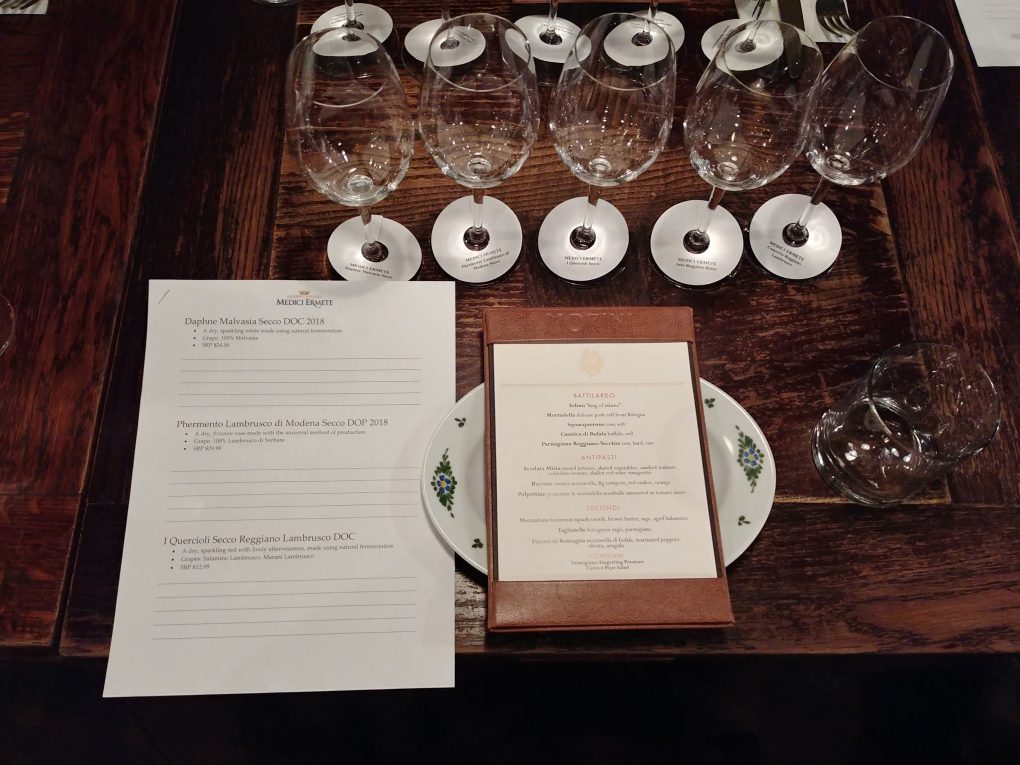

Alberto and Alessandro Medici of Medici Ermete, one of this region’s premier Lambrusco producers, arrived in New York City in January of this year, to showcase their award winning portfolio of wines. This 130 year old winery is also credited with having produced the first single vineyard Lambrusco Cru (most Lambrusco are a blend of grapes from different vineyards).
Medici Ermete was founded in 1890, and four generations later, this family owned winery hailing from Reggio Emilia, (a city in Emilia Romagna), is still transforming the art of Lambrusco making. The winery is named after Ermete Medici, who is credited with having helped to expand Lambrusco production in the area.
Medici Ermete is currently comprised of 5 estates, with a combined total of 70 hectares of vineyards. A century ago, roughly 56 varieties of Lambrusco were cultivated for wine making purposes. It remains a popular varietal given its resiliency, high yields and flavor diversity, and therefore its adaptability to a wide range of cuisines, (an even more important quality these days given the fact that we drink wine with everything from Szechuan beef to poke’ bowls). The multi course lunch at Alberto and Alessandro of Medici Ermete hosted at Osteria Morini reinforced the versatility of Lambrusco as a wine complement to an array of ingredients and flavors.
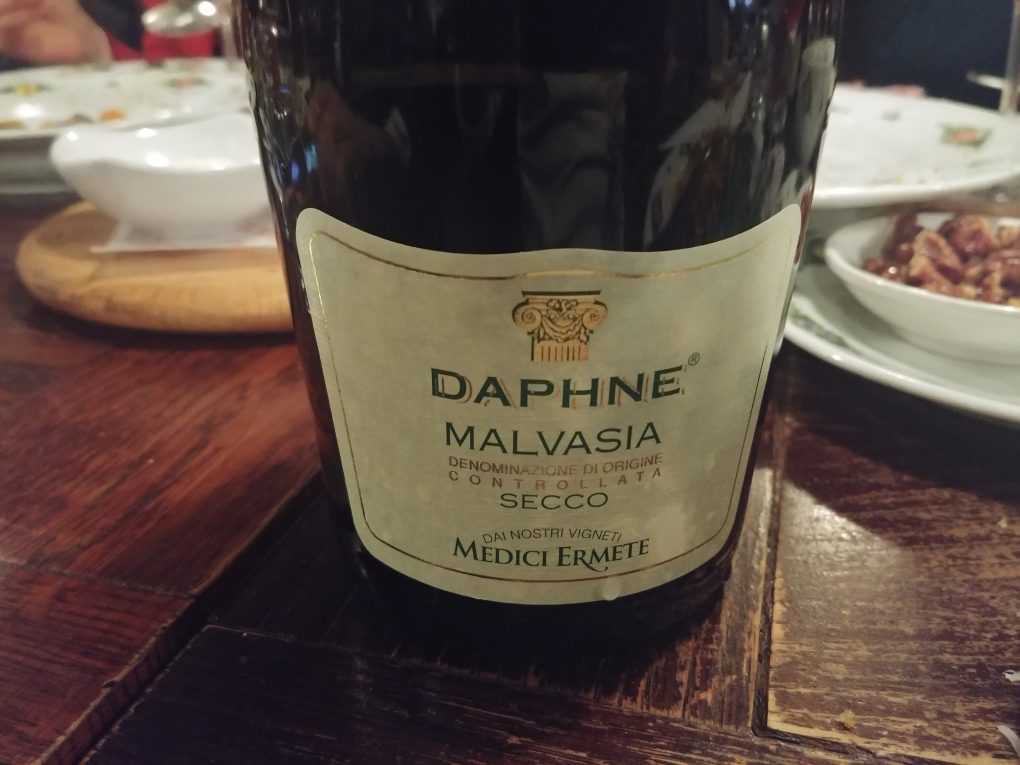
Alberto presented a single vineyard sparkling Daphne Malvasia Secco D.O.C. 2018 made from 100% naturally fermented Malvasia.
It was vivacious, full of effervescence, and marked by beautiful aromas of flowers and muscat, and ripe orchard fruit notes.
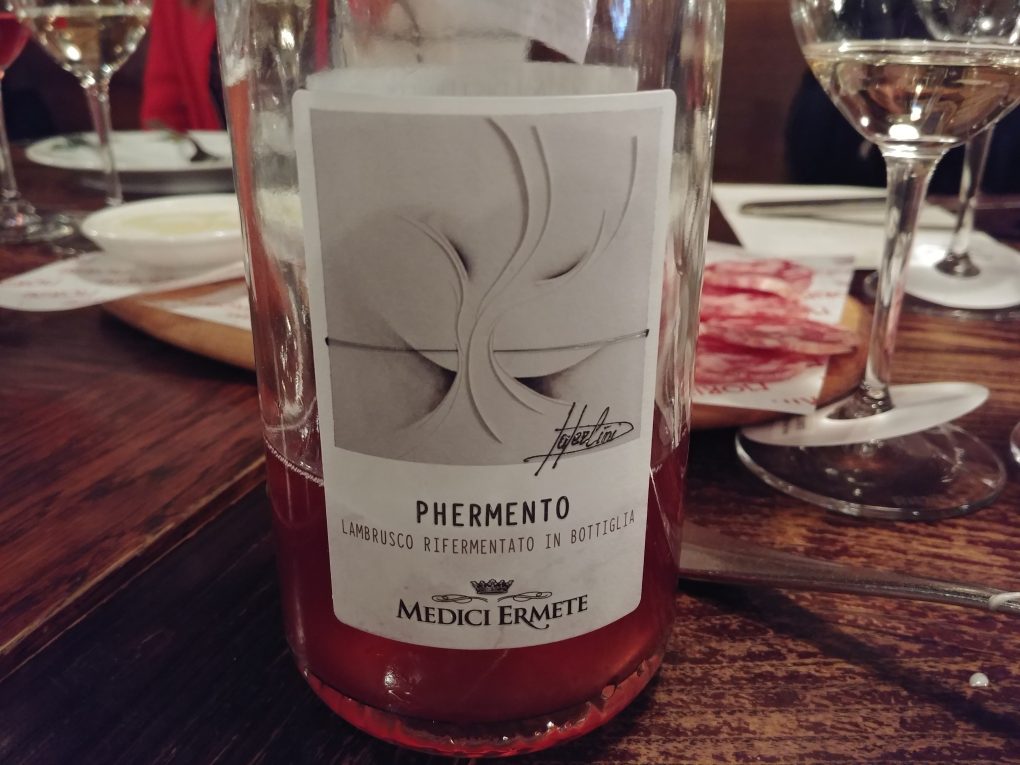
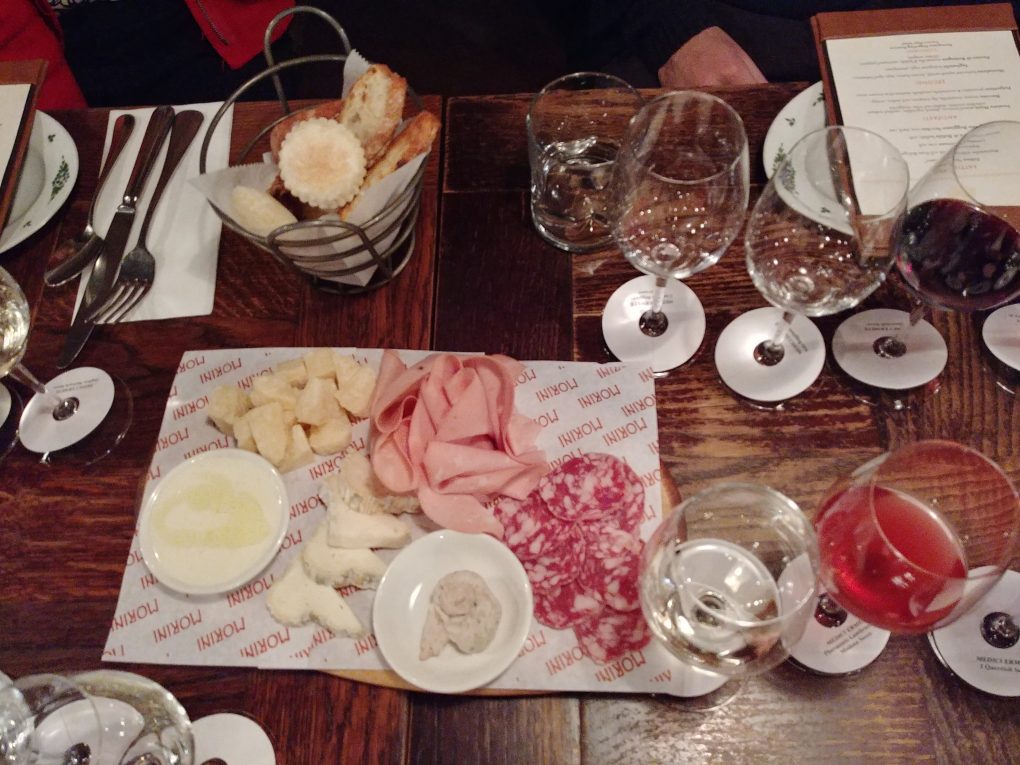
This white wine whet the appetite for the first in a quartet of Lambrusco that followed, including a Phermento Lambrusco di Modena Secco D.O.C. 2018 frizzante rose’ comprised of 100% Lambrusco di Sorbara. Lambrusco is traditionally left on the lees for only a short amount of time. The wine takes on color quickly, and prolonged contact with the grape skins tends to heighten bitterness. The deep pink hue of this rose’, as well as its freshness, bright acidity and young berry fruit character, is a testament to the rich color and flavor properties inherent in Lambrusco di Sorbara. It paired nicely with a selection of regional meats and cheeses including Felino salami, Bologna mortadella, squacquerone, casatica di bufala, and parmigiano reggiano vecchio, and a salad of mixed lettuce, shaved vegetables, candied walnuts, robiola crostini, and shallot red wine vinaigrette .
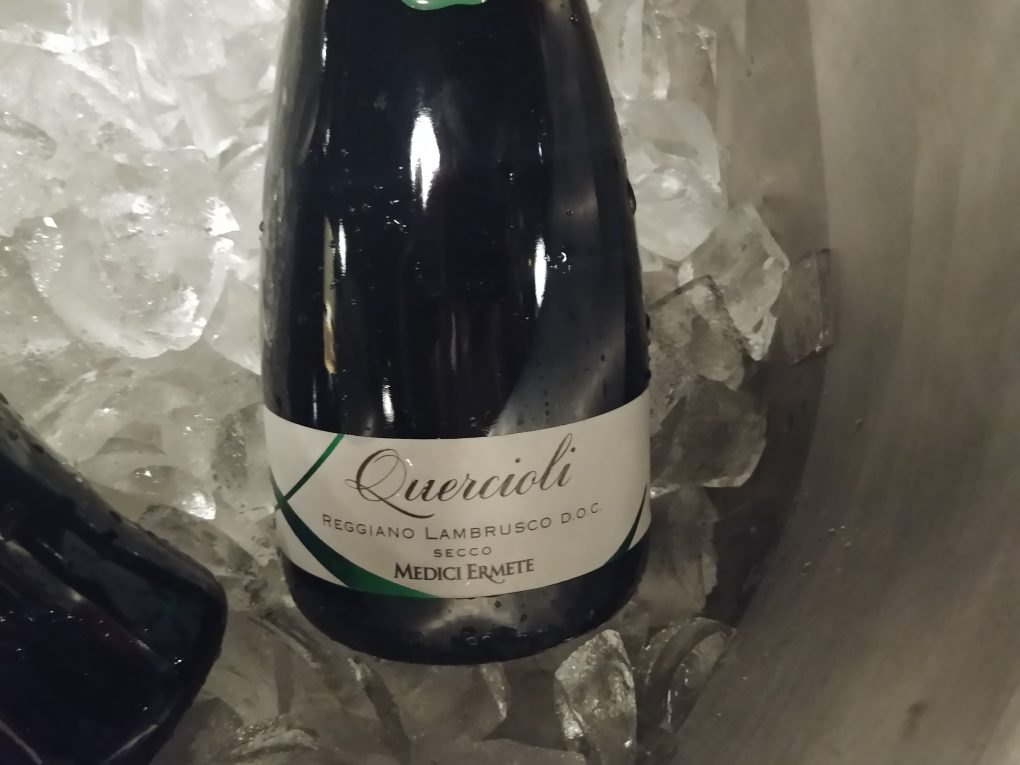
A fresh I Quercioli Secco Reggiano Lambrusco D.O.C. blend of Salamino Lambrusco and Marani Lambrusco presented with lively red fruit aromas, and juicy grape skin, berry, and dark stone fruit notes. The wine was left on the lees for three days, resulting in its concentrated ruby hue.
It was a fine complement to a creamy burrata, with fig compote, red endive, and orange, and a mezzaluna butternut squash ravioli cooked in brown butter, with sage, and aged balsamic.
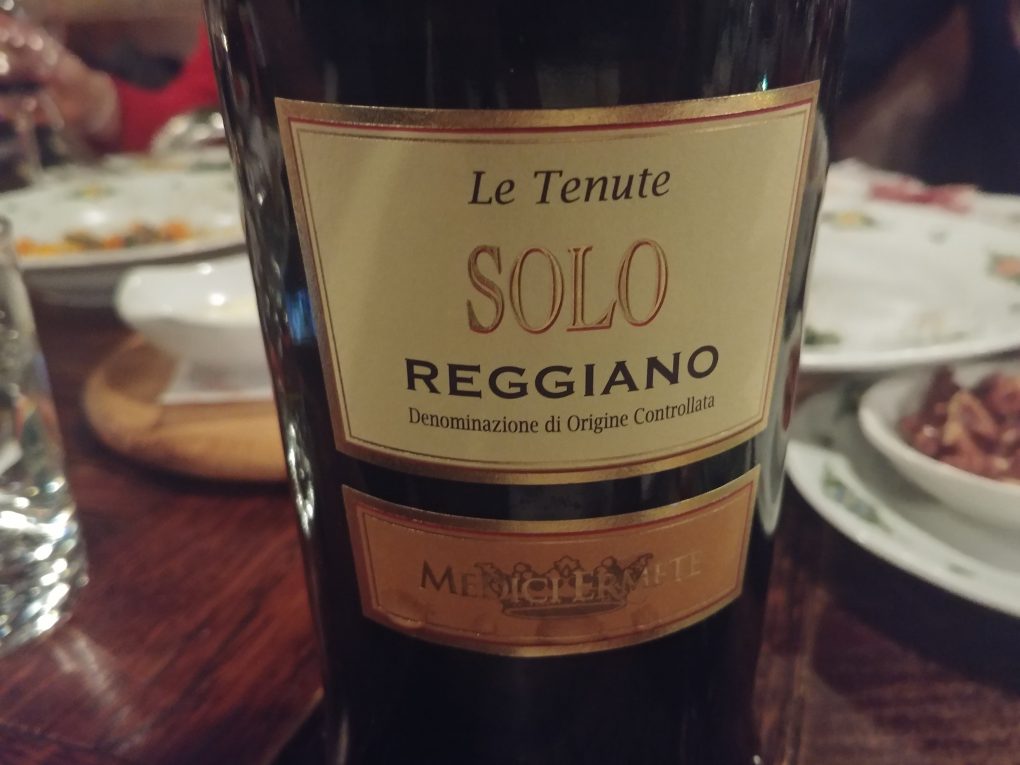
A single vineyard Solo Reggiano Rosso D.O.C. 2018 sparkling red wine consisting of 51% Ancellota and 49% Lambrusco Salamino was marked by ripe berry and grassy aromas, grape skin and strawberry and raspberry fruit notes, subtle wood elements, and good acidity. The Ancellota grape rounds out the acidity, highlights the essence of red and dark fruits, and gives color to the blend.
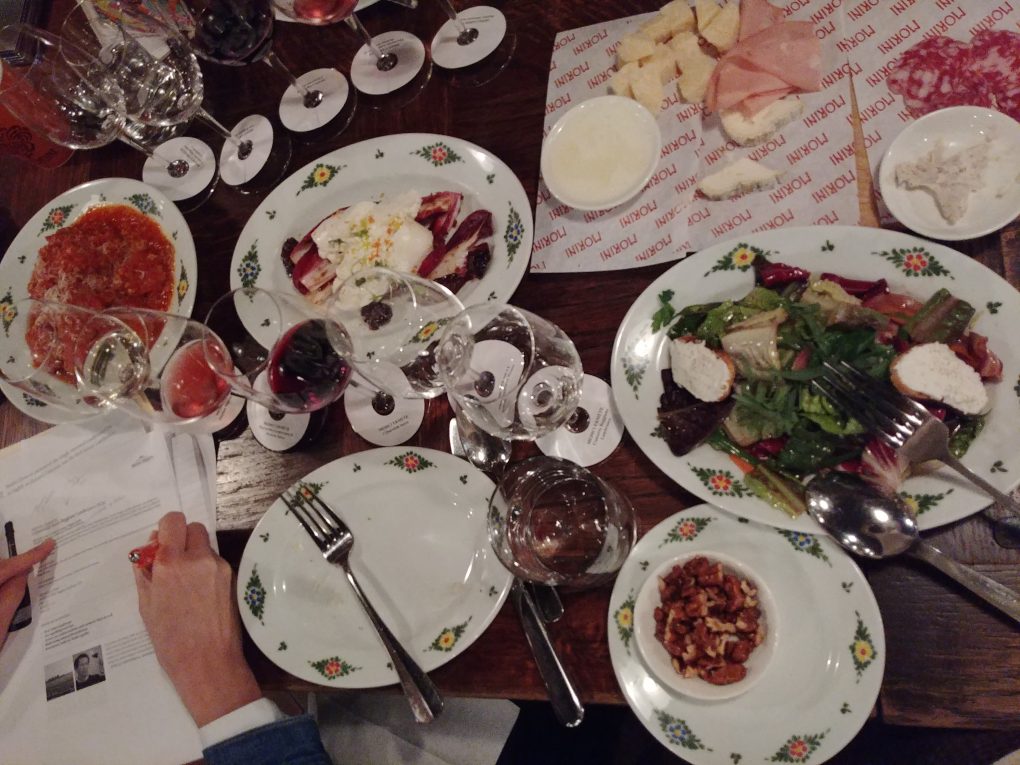
A polpettini, prosciutto and mortadella meatballs simmered in tomato sauce, and a panino di Avellino Romagna with mozzarella di bufala, marinated peppers, olivata, and arugula, served as seamless accompaniments.
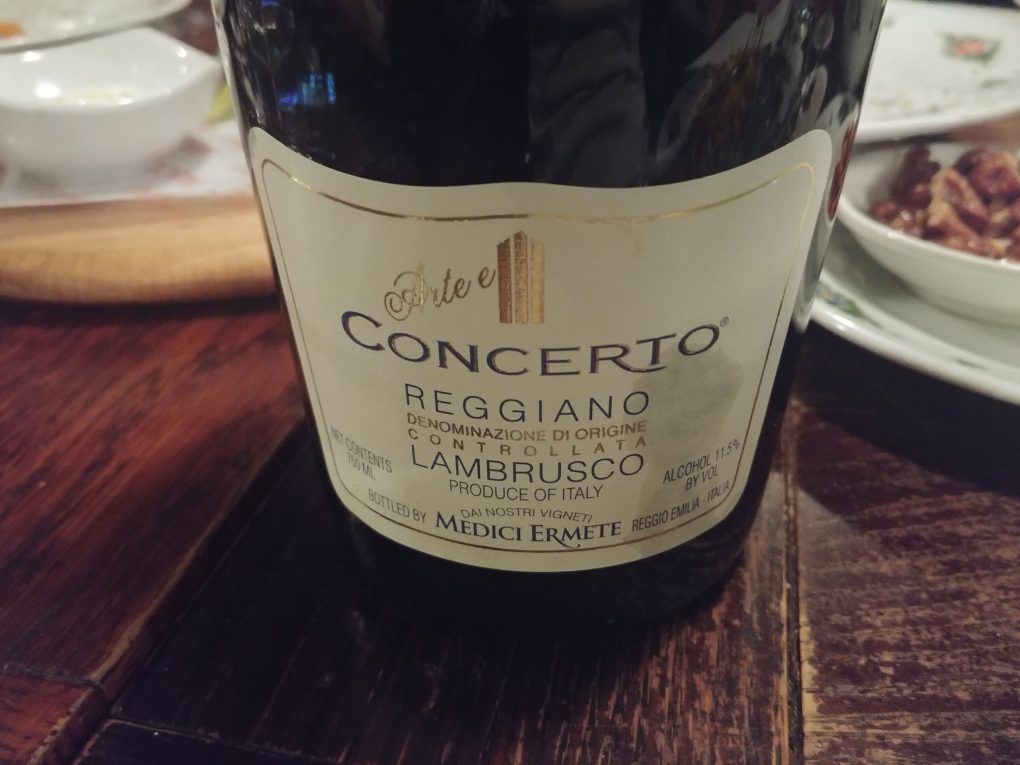
A single vineyard Concerto Reggiano Lambrusco 2018 (the first ever single vintage Lambrusco) made with 100% Salamino Lambrusco harvested from a low yielding vineyard ( producing 50% to 60% less grapes per vine on average ), underwent six days of skin contact, at a secondary fermentation temperature of between 13 and 14 degrees Celsius. The result is a wine that presented with a wonderfully rich texture, and concentrated grape skin, strawberry, raspberry, and plum notes.
A tagliatelle tossed in a bolognese ragu and parmigiano reggiano, and a duo of side dishes, including a parmigiano fingerling potatoes, and a cheese and pepper salad salad, paired beautifully with this single vineyard Lambrusco.

Be First to Comment